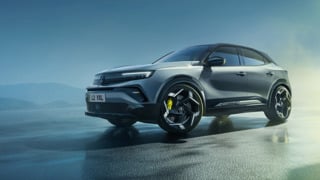The value of salary sacrifice (sal/sac) to the continued uptake of battery electric vehicles (BEVs) has been highlighted in new research, with more than half of drivers (60%) saying they would choose a fully electric car if this funding method was available.
However, without access to a sal/sac scheme, a similar amount (61%) of employees said they would buy a petrol or hybrid vehicle instead.
The survey of more than 2,000 in-work drivers, commissioned by sal/sac specialist Tusker for its annual motoring report, also shows that, despite the cost-of-living crisis, more than half (53%) expect to change their car within two years.
It suggests a huge opportunity for sal/sac and the continued decarbonisation of the UK car parc. Tusker CEO Paul Gilshan told Fleet News: “If we’re going to change the UK into an electric vehicle (EV) marketplace, we really need access for all people in the UK and I just don’t think we’re there, because it’s just too expensive (to currently buy an EV).
“Our research clearly shows, however, that demand is definitely there for EVs, given the right incentives.”
INCREASING EV UPTAKE
Gilshan contends that low benefit-inkind (BIK) tax rates for EVs, combined with being able to fund a new car through salary sacrifice, has given Government a route to drive EVs into the mass market.
“Other (funding) products, as the report shows, are just completely inaccessible to them,” he added. “Who can afford to make a £3,000 upfront payment on a personal contract purchase (PCP)?”
Of those expecting to buy a new car, the research reveals that one-in-four (25%) plan to buy a new vehicle on PCP, and one-in-five (20%) plan to buy their vehicle outright.
Of those expecting to switch vehicles in the next two years, more than a third (37%) expect to get a car that is one-to-three years old, one-in-five (19%) will buy at four-five years old, while 15% said they would opt for a new vehicle.
Data from Tusker’s own internal research shows that the average age of vehicle being traded for a new car on salary sacrifice is nine years old.
Gilshan said: “I just think (sal/sac) is able to give more people, in particular the right people, the later adopters, access to an EV now and that is key.”
PLUG-IN MARKET SHARE
The latest sales data shows there have been almost 200,000 new BEVs and more than 80,000 plug-in hybrid electric vehicles (PHEVs) registered so far this year, with the Society of Motor Manufacturers and Traders (SMMT) predicting a plug-in market share of 21.9% in 2022.
However, BEV uptake in October grew by less than the overall market for the first time since the pandemic; it was the first month to see BEV market share fall year-on-year since May 2021.
This chimes with the views of several FN50 leasing companies who report that orders for electric vehicles have cooled in recent months.
The overall number of BEVs on UK roads topped half-a-million in June, according to licensing data from the Department for Transport.
Sal/sac has played a significant part in driving these EV adoption rates. The British Vehicle Rental and Leasing Association (BVRLA) reports in its latest quarterly Leasing Outlook report that salary sacrifice volumes for its members are up 33% year-on-year to 35,751 cars.
COST DRIVING CHOICE
Tusker’s annual report on motoring shows that running costs are the most important factor when choosing a new car, with 58% of respondents saying that they find running a petrol or diesel car expensive.
Of those surveyed, the running costs of their next vehicle was the biggest factor in the choice of their next car (61%), followed by the purchase cost (54%) followed by style (32%) and safety (31%).
Using comparable combustion and electric cars, in this case a 58kWh Volkswagen ID3 and a petrol Volkswagen Golf equipped with a 130PS 1.5-litre petrol engine, Tusker found an EV driver would be better off even before the other additional financial benefits of salary sacrifice have been factored into the calculations.
If the ID3 is charged at home via a 7kW home charger at 34p/kWh, and the Golf is fuelled at the current average cost of 165.5p per litre and both are driven for 10,000 miles per year, the electric ID3 would be 7.3p per mile cheaper to run, which equates to a saving of £60.80 a month.
“It remains significantly cheaper, even with a higher rate of electricity, to run an electric vehicle,” said Gilshan.
The research does suggest, however, a conflict between the perceived cost of running a petrol or diesel car and the cost of running an EV.
For those who would choose an EV, almost three-in-five (58%) said they find running a petrol or diesel car expensive, while 54% of in-work drivers who would not buy an EV said this was because of the high price of running one.
It suggests that the leasing industry and fleets have a job to do on educating drivers on EV running costs and the total cost of ownership (TCO). Gilshan agreed. “I think the industry needs to continue to myth bust,” he said. “We also need to show, with average mileages falling, they don’t need to charge that often.”
The average monthly mileage has continued to drop year-on-year, according to Tusker’s annual report, with 87% of drivers travelling less than 150 miles per week, which is an 8% drop on 2021’s figures.
Meanwhile, fewer than half (44%) of respondents do less than 50 miles per week, and just 20% of drivers cover between 100 and 200 miles each week.
Less than 2% of those surveyed drive more than 200 miles per week. Tusker’s own drivers have a slightly higher mileage than average, although 63% still travel less than 150 miles per week.
HIGHEST/LOWEST WEEKLY AVERAGES
On average, the weekly mileage across the whole of the UK is just 73 miles. Those in Greater London do the lowest weekly miles (64 miles) and drivers in Northern Ireland have the highest average weekly mileage of 99 miles.
Based on Tusker’s data showing an average EV range of 268 miles, it suggests that 95.4% of drivers can swap to an EV without needing to charge more than once a week.
However, highlighting the need for greater driver education, the majority of those surveyed assumed an average EV range of 125 miles – almost 40% lower than the actual average.






















Login to comment
Comments
No comments have been made yet.